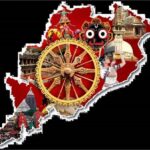Puducherry: 7 Remarkable Facts About Its Culture, History, and Society
Introduction
Nestled on the southeastern coast of India, Puducherry is a serene union territory that offers a delightful mix of colonial charm, rich culture, and vibrant traditions. Known for its beautiful beaches, French colonial architecture, and spiritual heritage, Puducherry has a unique blend of French influence and Indian culture, making it a remarkable destination to explore. With its peaceful atmosphere, artistic vibes, and distinct history, Puducherry has earned its place as one of the most culturally significant places in India. In this article, we will delve into its history, daily life impacts, and significance, offering insights into what makes Puducherry so special.
History of Puducherry
The, originally known as Pondicherry, has a long and fascinating history that has shaped its identity. The region’s history dates back to the early Chola dynasty, which had a significant influence on the development of the area. The city gained prominence under the French colonial rule, beginning in 1674, when the French East India Company established a trading post.
Over the years, Puducherry became an important center for French culture in India, with the French colonial architecture still visible today in parts of the city. This period lasted for nearly three centuries, influencing everything from language to lifestyle. It was only in 1954, after India gained independence, that Puducherry was merged with the Indian Union, but the French influence remains evident in the city’s streets, food, and culture.
Daily Life Impacts
Life in Puducherry offers a unique experience that blends modernity with historical charm. The daily life of its residents is influenced by the territory’s multi-cultural background, which combines French and Indian traditions.
- French Influence: The French presence in Puducherry continues to influence the lifestyle of the people, especially in terms of language, architecture, and food. Many locals still speak French alongside Tamil, and the streets of Puducherry reflect this colonial influence through buildings painted in pastel colors, quaint cafes, and cobbled streets.
- Religious and Spiritual Practices: It is home to several temples, churches, and ashrams, the most famous being Aurobindo Ashram, founded by the renowned philosopher Sri Aurobindo. This spiritual center attracts visitors from around the world who come to meditate and study spiritual practices. The presence of Sree Manakula Vinayagar Temple and Notre-Dame des Anges Church adds to the diversity of spiritual life in the region.
- Economy and Livelihood: The economy of Puducherry is largely driven by tourism, agriculture, and manufacturing. With its tourist-friendly atmosphere, many people in Puducherry work in the hospitality and retail sectors, while others continue to engage in traditional farming. Rice, pulses, vegetables, and fruits are grown in the rural areas surrounding the city.
- Cultural and Artistic Expression: It is a hub for artists, writers, and musicians. The city’s artistic vibe is felt through various art galleries, craft workshops, and cultural performances. The Puducherry region also hosts several annual events, such as the Puducherry Art and Craft Festival, attracting local and international artists alike.
Key Facts
- Capital: Puducherry itself serves as the capital of the union territory, consisting of four districts: Puducherry, Karaikal, Mahe, and Yanam.
- French Legacy: One of the key features of Puducherry is its strong French influence, which is visible in the architecture, cuisine, and language. The French Quarter in Puducherry is a popular tourist destination due to its colonial-style buildings.
- UNESCO Heritage Sites: Puducherry is home to several architectural landmarks, including the Aurobindo Ashram and Auroville, the universal township founded by Mirra Alfassa (the Mother). These sites attract a diverse community of spiritual seekers from all over the world.
- Cuisine: It’s cuisine is a blend of French and Tamil influences, with seafood, French pastries, Indian curries, and spices making up the local dishes. Popular food items include masala dosa, French baguettes, and beachside seafood.
- Beaches: The coastal beauty of Puducherry is a major draw for visitors. Famous beaches like Promenade Beach, Paradise Beach, and Serenity Beach offer both relaxation and adventure, making the region ideal for water sports and leisure.
- Language: The official language of Puducherry is Tamil, although many people also speak French and English, reflecting the territory’s colonial past.
Significance in India
It holds a unique place in India’s cultural, historical, and economic landscape. Here are some key points that highlight its significance:
- Cultural Fusion: It is a symbol of the fusion of two different cultures: French and Indian. This blend of French elegance and Indian vibrancy can be witnessed in the local architecture, festivals, and even in the cuisine.
- Spiritual Hub: The Aurobindo Ashram and the nearby Auroville are global spiritual centers. Auroville, known as the “City of Dawn,” is a unique project that aims to unite people from around the world in a universal township based on human unity, environmental sustainability, and spirituality.
- Tourism: As a tourism hub, It attracts both Indian and international tourists who come for its peaceful ambiance, colonial architecture, beaches, and spiritual retreats. The state’s tourism sector plays a significant role in its economy, contributing to employment and growth.
- Education and Research: It is home to prestigious educational institutions like Puducherry University and Auro University, which contribute to research and academic excellence in various fields.
Observance of Festivals and Traditions
It is a land of diverse festivals and celebrations. The community enjoys both Indian and French festivals, creating a blend of vibrant, colorful celebrations.
- Festival: The Puducherry Festival, celebrated in August, is a unique celebration of the region’s cultural heritage, featuring local music, dance performances, and exhibitions of crafts.
- Cultural Events: Annual festivals such as Coconut Festival and Pongal are celebrated with great enthusiasm. The Rath Yatra of the Jagannath Temple and Christmas celebrations in the French Quarter are noteworthy.
- Traditional Festivals: Deepavali, Navratri, and Makar Sankranti are celebrated in the typical Tamil tradition, with families coming together for prayers, festivities, and traditional foods.
Wishing for Future
As it continues to grow and evolve, it is important that the region maintains its distinct cultural identity while embracing modernity and development. The future of Puducherry lies in sustainable tourism, promoting art, culture, and education, while also ensuring that the beauty of its natural surroundings is preserved for future generations. The people of Puducherry wish to see the territory thrive as a symbol of cultural diversity, spiritual unity, and economic prosperity.
FAQs
- What is the capital? The capital of Puducherry is Puducherry city.
- What is the historical significance? it was under French colonial rule for over 300 years and is known for its French-inspired architecture and culture.
- What are some famous attractions? Popular attractions include Aurobindo Ashram, Auroville, Promenade Beach, and the French Quarter.
- What is the primary language spoken? The primary language spoken in Puducherry is Tamil, but French and English are also widely understood.
- What is the food culture? It offers a unique fusion of French and Indian cuisine, with dishes like French baguettes, seafood, and masala dosa.
Conclusion
It stands out as a destination where history, culture, and spirituality blend seamlessly. With its French colonial influence, vibrant festivals, pristine beaches, and rich cuisine, the union territory is a unique part of India’s cultural fabric. Puducherry’s significance in the country’s history, tourism, and society cannot be overstated, making it an essential part of India’s diverse identity.










